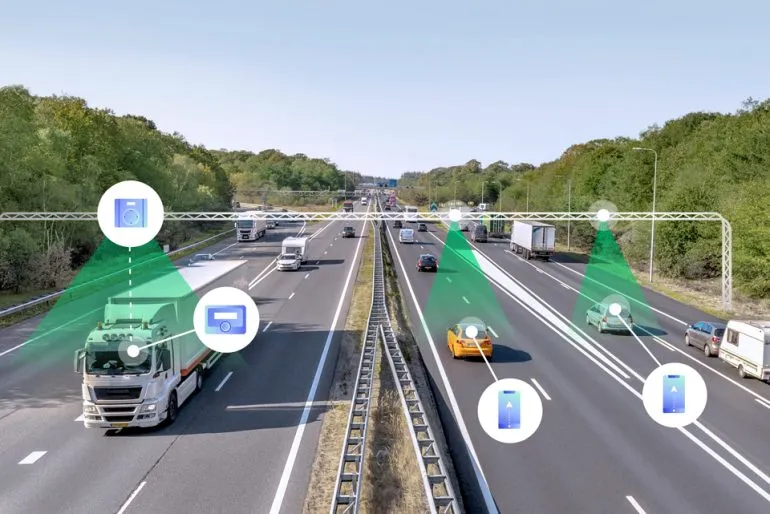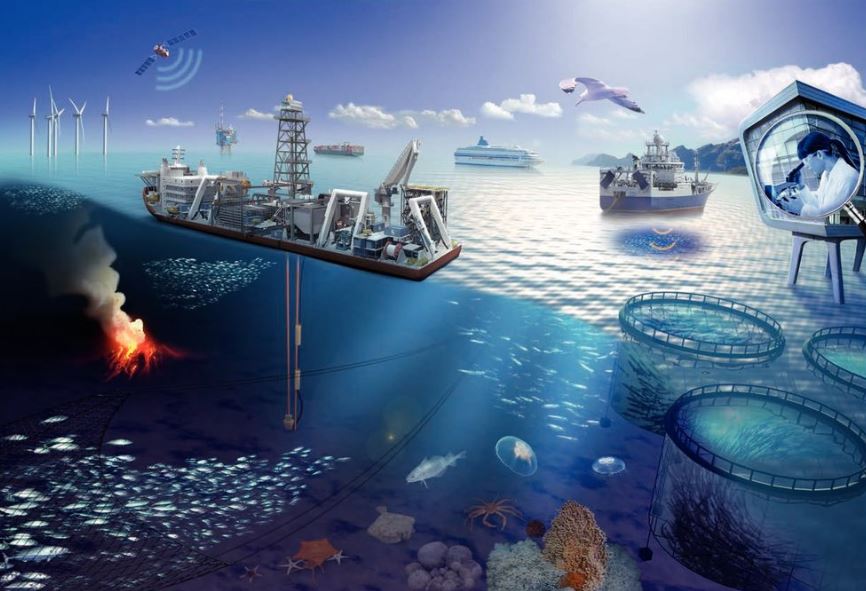India’s Deep Sea Exploration
Context:
India recently achieved a significant milestone by completing the wet testing of its Matsya-6000 submersible, designed to dive up to 6 km beneath the ocean surface for underwater mineral exploration.
More on News
- The country’s first deep-sea manned vehicle is set to be launched later this year, placing India among an elite group of nations capable of conducting human expeditions to such depths.
- Meanwhile, China has unveiled a compact deep-sea cable-cutting device that can be mounted on submersibles and is capable of severing even the most fortified underwater communication and power lines.
- With the world’s largest fleet of submersibles, China’s advancements highlight the increasing strategic significance of deep-sea technology.
Deep Ocean Mission (DOM)
India’s Deep Ocean Mission (DOM) is an ambitious initiative launched by the Ministry of Earth Sciences (MoES) to explore and harness the vast resources of the ocean. It aims to support India’s Blue Economy and strengthen its position in ocean research and exploration.
Key Features:
- Samudrayaan Project: A crewed mission to send three individuals to depths of 6 km in an indigenous submersible with a 72-hour endurance.
- Budget: ₹4,077 crore allocated for five years, with ₹600 crore for FY25.
- Collaborations: Involves organizations like ISRO, DRDO, CSIR, DBT, and the Indian Navy.
Growing Importance of Deep-Sea Capabilities
- Intensified Global Interests: Over the past two decades, global interest in deep-sea exploration has intensified, driven by both economic resource extraction and geopolitical considerations.
- The United Nations Convention on the Law of the Seas (UNCLOS) defines a country’s Exclusive Economic Zone (EEZ) as extending 200 nautical miles (about 370 km) from its coastline, granting exclusive rights to resources in these waters.
- India’s EEZ: India’s EEZ has an average depth of 3,741 meters—more than four and a half times the height of Burj Khalifa—but remains shallow compared to the Challenger Deep in the Mariana Trench, which lies over 10 km below the surface.
- Operating in such extreme depths demands highly specialised and costly technology.
Technological Challenges
- Sound Propagation: While sound travels long distances underwater, its effectiveness is influenced by temperature, pressure, and salinity.
- Advanced technologies like Very Low Frequency (VLF) and Extremely Low Frequency (ELF) sound waves are required for efficient underwater communication and navigation, necessitating deep research and substantial funding.
- Extreme Pressure: Underwater pressure increases by one atmosphere (atm) for every 10 meters of depth.
- At the ocean bed in India’s EEZ, the pressure exceeds 380 atm—380 times the pressure at sea level.
- Submersibles and deep-sea equipment must be built with highly specialised materials and engineering techniques to withstand such conditions.
- The OceanGate Titan submersible disaster of June 2023 serves as a stark reminder of the risks associated with deep-sea exploration.
Why is Deep-Sea Technology Critical for India?
India must overcome these challenges to harness the potential of its blue economy. The ocean is a vast repository of resources, including fish, minerals, gas hydrates, oil and gas reserves, and nutraceuticals. Additionally, oceanographic data can contribute to climate change mitigation and meteorological research.
Key areas requiring technological advancements include:
- Hydrographic Research and Exploration: Advanced deep-sea research is essential for resource mapping and sustainable exploitation.
- Diving, Salvage, and Submarine Rescue: Enhancing these capabilities will ensure safety and operational success in deep-sea missions.
- Underwater Infrastructure Development: The modern world relies on undersea cables for over 95% of intercontinental internet traffic, facilitating global communication, financial transactions, and data exchange.
- Developing expertise in laying and maintaining these cables is crucial for India’s digital connectivity and economic security.
- Maritime Security and Threat Mitigation: With the development of China’s deep-sea cable-cutting device, India must prioritise underwater domain awareness and defensive technologies to protect its maritime infrastructure.
Way Forward
- Strengthening Capabilities: To develop deep-sea technology, India must strengthen its financial, academic, and research capabilities.
- Countries like China, France, Japan, Norway, Russia, South Korea, and the US have made significant advancements in this domain due to long-term investments in deep-sea science and engineering.
- Recognising Importance: Recognising the importance of deep-sea exploration, the Indian government launched the Deep Ocean Mission under the Ministry of Earth Sciences in 2018.
To accelerate progress, India must:
- Establish Centers of Excellence: Specialised institutes for deep-sea research will help nurture academic expertise and innovation.
- Provide Generous Funding and Policy Support: Incentivising research and development in deep-sea science and engineering through financial backing and streamlined approvals is essential.
- Upgrade the Department of Ocean Development: Elevating it to a full-fledged ministry with a cabinet-rank minister will ensure better coordination and accountability among various stakeholders.
- Implement Mission-Mode Projects: Time-bound and result-oriented projects should be launched with a focus on efficiency, ease of doing business, and strict accountability.
- Develop a Long-Term Strategy: A ten-year roadmap for deep-sea technology development can help India systematically build its capabilities.
- Dual-Use Nature of Deep-Sea Technology: It is crucial to recognise that deep-sea technologies have both civilian and military applications.
The deep sea presents both challenges and opportunities for India. By investing in advanced technologies, fostering academic and research excellence, and strengthening its strategic capabilities, India can position itself as a global leader in deep-sea exploration.


